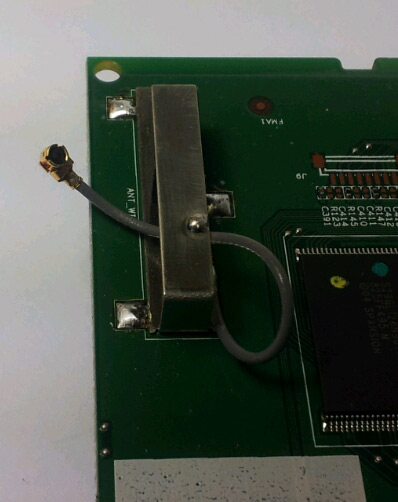Archive
Home Hub 3 Disassembly
Today, I’m disassembling the new Home Hub 3 from BT, read about it’s specification and it’s aesthetics and web interface here.
This post is all about the hardware inside the hub, who makes it, how future proof is it and how technically robust it is.
FRONT
To start, the bottom of the device is screwed together under the sticky feet.
There are some catches along the sides and the top, they come undone very easily, unlike the first HomeHub, which was almost impregnable.
The front comes off really easily, and we reveal the front side pcb with the 3 LEDs and a chip in the center of the board.
If we magnify the center chip we can see the details of chip and manufacturer
So, the main feature on this side of the board is the Lantiq PSB6972 – we can read directly from their website that this is an ethernet controller, they refer to it as the XWAY TANTOS – a
seven-port Ethernet switch controller with five ports supporting 10/100 Mb/s TX/FX Full/Half duplex and two/three supporting 10/100/1000 MAC Full/Half duplex operations.
Advanced features such as 802.1p(Q.O.S.), 802.1q(VLAN), Layer4 Q.O.S, Security, Bandwidth Control/Guarantee, Port Mirroring, IGMP and Management
Interestingly, the XWAY chipset was developed by Infineon, before the creation of Lantiq. The following text, from their CPE brochure shows.
Our portfolio includes extremely power-efficient solutions for ADSL2/2+, SHDSL, and even VDSL2. With
the Infineon® XWAY™ product family we drive innovative services such as Voice over IP, HD telephony, HD television, IPTV,
video on demand, interactive gaming, distance learning, video conferencing, and high-speed internet access.
REAR
We have to remove the 2 center screws that secure the PCB to the plastic housing.
and magnifying the main components on this side.
The main components here are the Lantiq PSB50810 and the NAND256W3A2BZA6 flash. The chip to the very right hand side is the UTC LM324
Details on the PSB50810, the NAND flash, and the UTC LM324 chip.
XWAY ARX168
ARX168 is ideal for next generation high end ADSL2/2+ Router and WLAN router applications supporting high-bandwidth services.
Its dual CPU architecture combined with protocol acceleration guarantee ideal routing throughput, powerful enough to make it the central point of the end-user’s home network.
Internet Protocol Television (IPTV) applications benefit from the high routing capabilities as well as from the many special DSL Physical Layer features such as Erasure Decoding and Re-Transmission.
Some people have reported better replay quality and less stutter from BT Vision, the IPTV offering from BT, with Home Hubs 3. This new IC and associated chipset may be the reason.
Here is a diagram, from the Lantiq PDF on the ARX168:
You can see from the diagram above that Wifi is connected to the ARX chipset through a PCI bus, similar to the HomeHub 2 – where Wifi was provisioned through a mini PCI card.
The actual device providing Wifi is the Atheros AR9227, more on this below.
The Lantiq press release regarding the Infineon ARX168 chipset can be found here.
Gigabit Ethernet
The red ethernet and the right hand port of the bank of 4 yellow ethernet are gigabit enabled. Above each is an individual controller chip to facilitate these faster ethernet speeds.
This chip is the Lantiq PEF7071 also know as PHY11G
A single Physical Layer (PHY) gigabit ethernet device with integrated serialisation/de-serialisation (SerDes)
You can download the full spec from their website as a pdf.
WIFI
Wifi is provided by the Atheros AR9227 connected to the Lantiq chipset via a PCI bus. It is a 2.4GHz only solution.
The manufacturer put out a press release announcing
the industry’s most integrated 2-stream 11n solutions, the AR9287 PCIe and the AR9227 PCI, which deliver no-compromise, full MIMO transmit and receive performance. Atheros has taken system integration to a new level, driving refinements in XSPAN, the industry’s most widely deployed 11n technology, to make the high-performance WLAN solution accessible in an even wider array of wireless products.
The two new designs, which target the PC and broadband consumer premises equipment (CPE) markets, integrate the MAC/baseband and radio transceiver, two enhanced MIMO power amplifiers and low noise amplifiers, and the transmit/receive switch, all onto a single chip. As a result of this extraordinary integration, these highly optimized and cost-effective designs will enable a new class of 11n products.
On the board you can see it also has two unused connectors, although I cannot decide what sort they are. Checkout this website of mini smt wifi receptacles to see what you think?
Update!
After reading some of the comments, I am updating this internal antenna section to include some photos of the 2x internal antenna used in the HomeHub 2.
They’re both very basic, no more than a wire from the PCB connector to a piece of shaped metal.
It’s very possible you could make an external antenna modification, if the header on the PCB is active.
CONCLUSION
The HomeHub3 is a whole technological class above the HomeHub2 with it’s Lantiq chipset working in harmony to deliver low power and high performance compared to the previous versions Broadcom networking solution with a mini PCI card thrown in. What I don’t understand is why they chose to use the Atheros AR9227 single band solution for WiFi when the Lantiq partnership is so strong with the rest of the components.
The Lantiq WAVE 300 is their proprietary WiFi solution, with support for the 2.4GHz and 5Ghz bands. Using this chip in the HomeHub3 would have offered a higher degree of future proofing.
It’s a smaller, more power efficient router. It’s gigabit ethernet will be of use in the future for many, but the big winner in this is BT. With the loss of the DECT support and VOIP function, they have reduced call volume for WiFi and handset faults and reduced overheads by removing VOIP support. They no longer need to stock spare handsets, and they have put the cost of faults back on the consumer.











